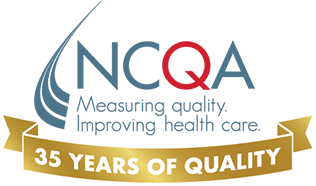This next generation of HEDIS®1 measures will reduce reporting burden by getting data needed for measurement from what clinicians and their teams enter electronically in the normal course of patient care. Electronic health records (EHRs), along with other electronic sources like registries, and health information exchanges, can provide a much more robust picture of quality than traditional reporting based on claims data.
The next generation of HEDIS will further:
- Align measures across the health care system to allow quality comparisons across offices, hospitals, health plans and other settings.
- Provide greater flexibility by allowing adjustments to some measure specifications to meet state, local or system needs.
- Improve accuracy and validity while reducing costs to implement and update measures by letting vendors and health systems digitally download specifications from the cloud, reducing manual data entry and relying more on data already in electronic systems.
- Enhance the value for patients, clinicians, payers, plans, electronic system vendors and government by reducing costs and efforts while allowing more meaningful measurement.
- Build the foundation for new outcome measures based on the rich clinical data in electronic sources other than claims.
We released the first six new generation HEDIS measures in 2018. Our goal is to convert around 50 measures over the next three years into machine and human-readable “digital measure packages” while allowing traditional reporting for those not ready for electronic reporting.
How the Technology Works
The digital measure packages specify the data in electronic sources that we could and should use to support measures. We use existing EHR data exporting standards to extract these data
- Quality Data Model (QDM) is a common data model which defines elements that comprise quality measures (i.e. diagnoses, primary care encounter, screening test for a particular condition) in a standardized way. Medicare requires QDM as the standard for electronic clinical quality measures in the Merit-Based Incentive Program (MIPS).
- Fast Healthcare Interoperability Resources (FHIR) specification, which is a standard for exchanging healthcare information electronically designed to simplify implementation without sacrificing information integrity.
- Clinical Quality Language (CQL), which is the standard logic used to tie measure data elements together to produce scores. CQL is the same standard used for both electronic clinical quality measures and clinical decision support systems.
These standards provide a template for running measure queries against health systems’ data to generate reliable results. CQL logic does much of the “heavy lift” of measure calculation for end users in a highly standard fashion. This is a sharp departure from having each site create their own interpretation from a text description. It also reduces the need to check boxes for measure requirements and eliminates burdensome manual record review.
How it Provides Greater Flexibility
Electronic measurement provides greater flexibility by allowing adjustments to some measure specifications so they better meet needs of payers and other measurement stakeholders. NCQA understands that stakeholders sometimes adjust HEDIS specifications to address their specific concerns, such as performance gap analyses and internal quality improvement projects. Although results of adjusted measures are not comparable to those generated using the standard specifications, they do provide the ability to look at specific populations and adjust time frames.
The next generation of HEDIS introduces “allowable adjustments” that let entities like states or health systems focus measurement without changing core clinical intent. Working within the allowed adjustments, stakeholders can:
- Adjust populations measured to look at members by provider group or geographic area.
- Change the measurement period to look at a partial year for gap analysis.
- Adjust and focus items such as age spans, time ranges, etc.
Challenges Ahead
As with any pioneering effort, NCQA’s Data Measures Roadmap faces many daunting challenges.
- Data in electronic sources come in many disparate formats and in both structured and unstructured fields. We need the right data in the most efficient, economical, and verifiable ways for measurement, quality improvement, and benchmarks. Moving to more uniform implementation of national electronic data transfer standards and use of technology such as natural language processing are some of the ways we can begin to address this.
- Another challenge includes reconfiguring infrastructure throughout the health care system for electronic reporting. While the most advanced plans, systems and practices are ready for all-electronic reporting, others need more time and we will work to accommodate entities as they transition to full electronic reporting.
- Other challenges include getting data from all pertinent sources, some of which block data sharing for proprietary reasons, and obtaining collaboration from all stakeholders to support and accelerate this revolutionary advancement.
NCQA is committed to working with all stakeholders to meet these challenges so we can reduce the burden of measure reporting while improving the meaningfulness of what we measure.
1 The Healthcare Effectiveness Data and Information Set (HEDIS) is a registered trademark of NCQA.
-
Save
Save your favorite pages and receive notifications whenever they’re updated.
You will be prompted to log in to your NCQA account.
Save your favorite pages and receive notifications whenever they’re updated.
You will be prompted to log in to your NCQA account.
-
Email
Share this page with a friend or colleague by Email.
We do not share your information with third parties.
Share this page with a friend or colleague by Email.
We do not share your information with third parties.
-
Print
Print this page.
Print this page.
